Not everyone is a big fan of arachnids, but they’re an incredibly diverse and fascinating group of invertebrates. With over 51,000 species, spiders range in size from the tiny Patu marplesi of Samoa (with a leg span of 0.018 inches) to giants capable of tackling mammalian prey! Here, we take a look at the largest specimens and reveal the 18 most gigantic spiders on planet Earth.
Goliath Birdeater (Theraphosa blondi)
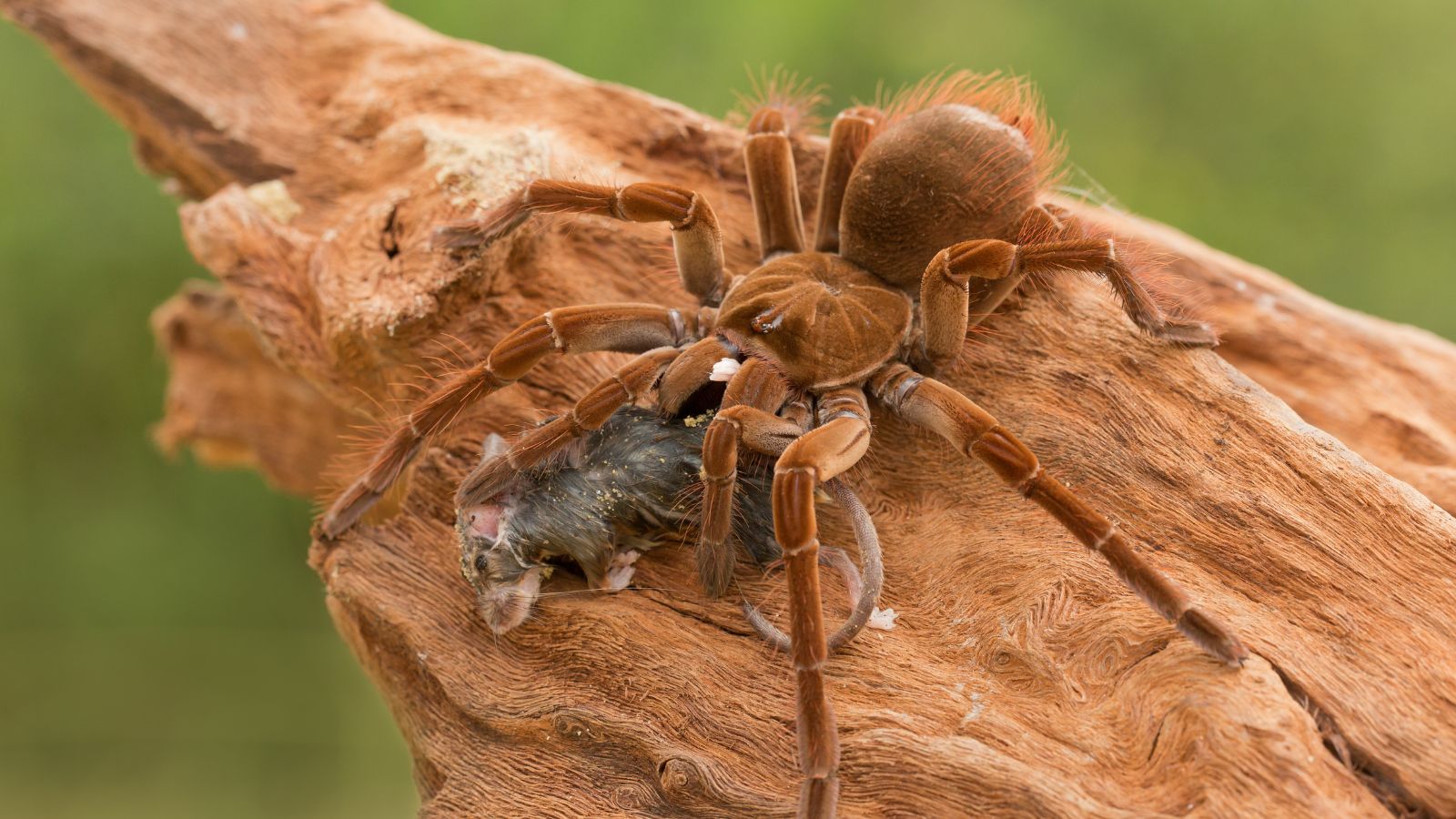
Native to the rainforests of South America, this spider is the largest spider by mass. Live Science reports, “Its legs can reach up to one foot (30 cm), and it can weigh up to 6 oz. (170 g).” Despite its name, it rarely eats birds but eats large insects and small mammals like mice. It isn’t harmful to humans, although its hairs can cause mild irritation.
Giant Huntsman Spider (Heteropoda maxima)
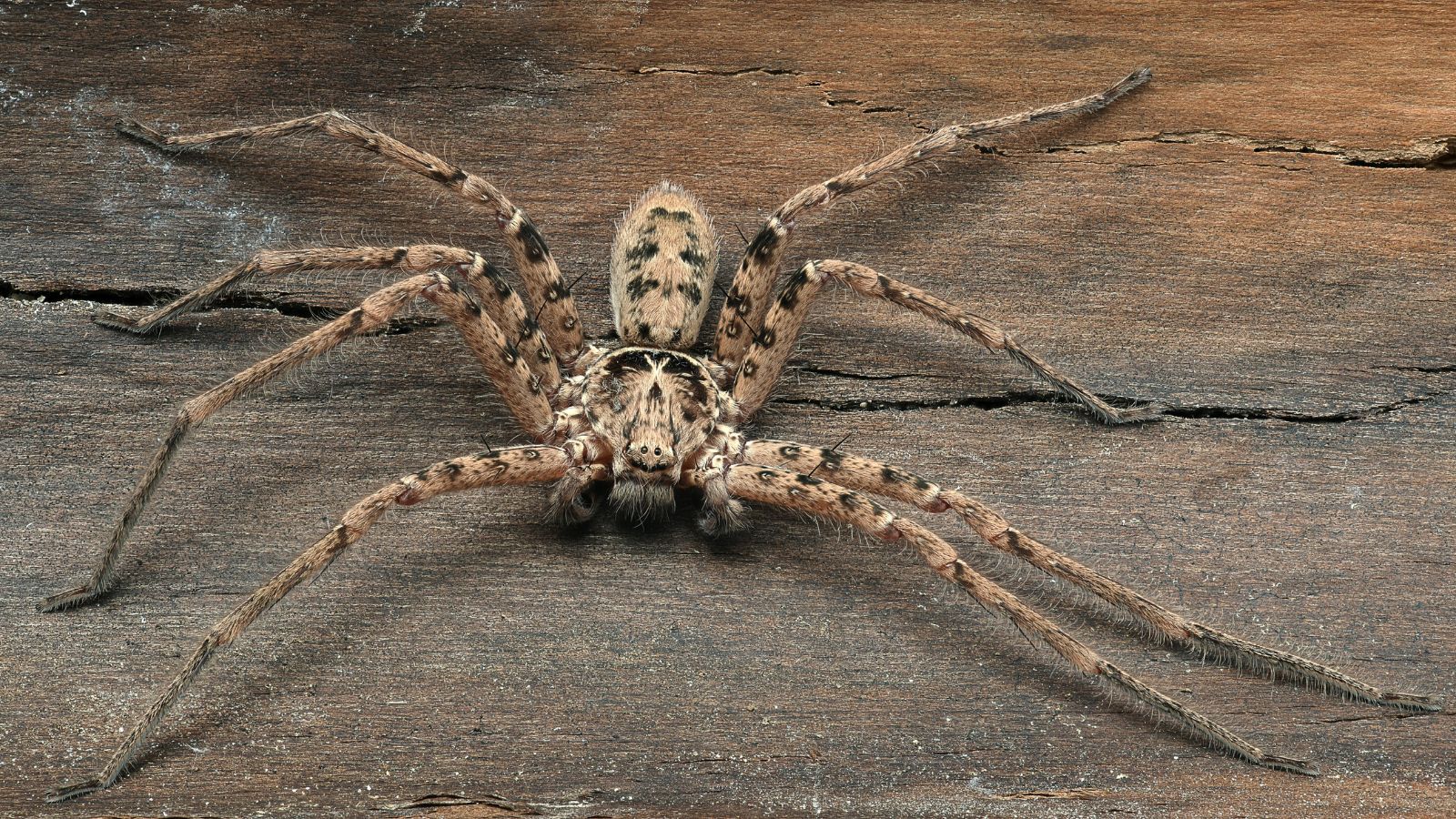
This long-legged species of spider is found in Laos, and it has the largest leg span of any arachnid, at over 12 inches (30cm). It’s a cave dweller and typically seeks out dark, moist environments where it hunts for insects like cockroaches, caterpillars, moths, and other spiders. Despite its formidable size, it’s rarely aggressive toward people.
Brazilian Salmon Pink Bird-Eating Spider (Lasiodora parahybana)
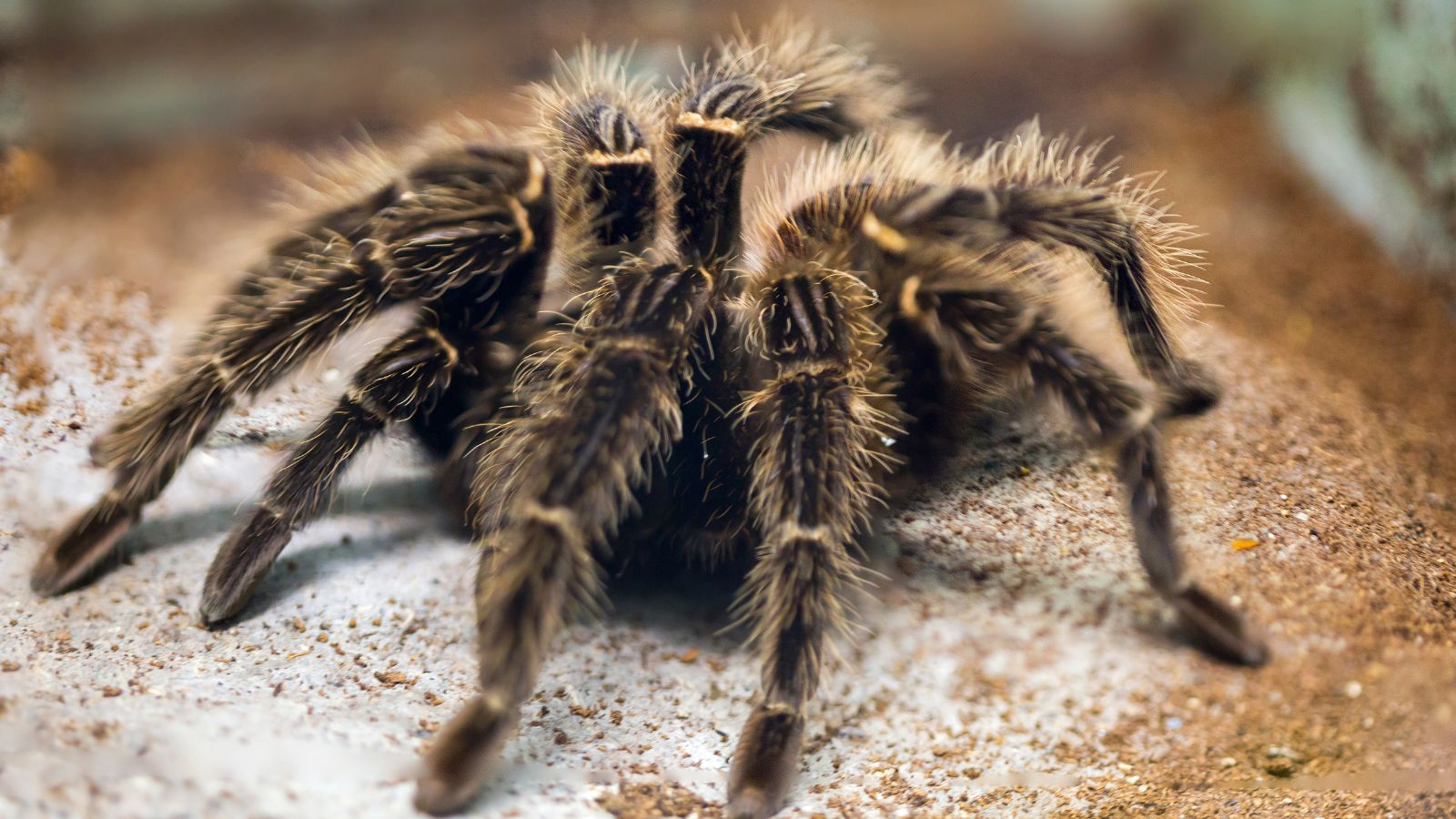
The Chester Zoo states this species is one of the largest tarantulas, with a leg span of up to 11 inches (28cm). Although it has been observed eating hummingbirds (hence the name), it eats a variety of insects, rodents, and small birds in the Brazilian rainforests it calls home. The spider has an unusual defense mechanism—it ‘flicks’ its irritating leg hairs at potential threats!
Brazilian Giant Tawny Red Tarantula (Grammostola anthracina)
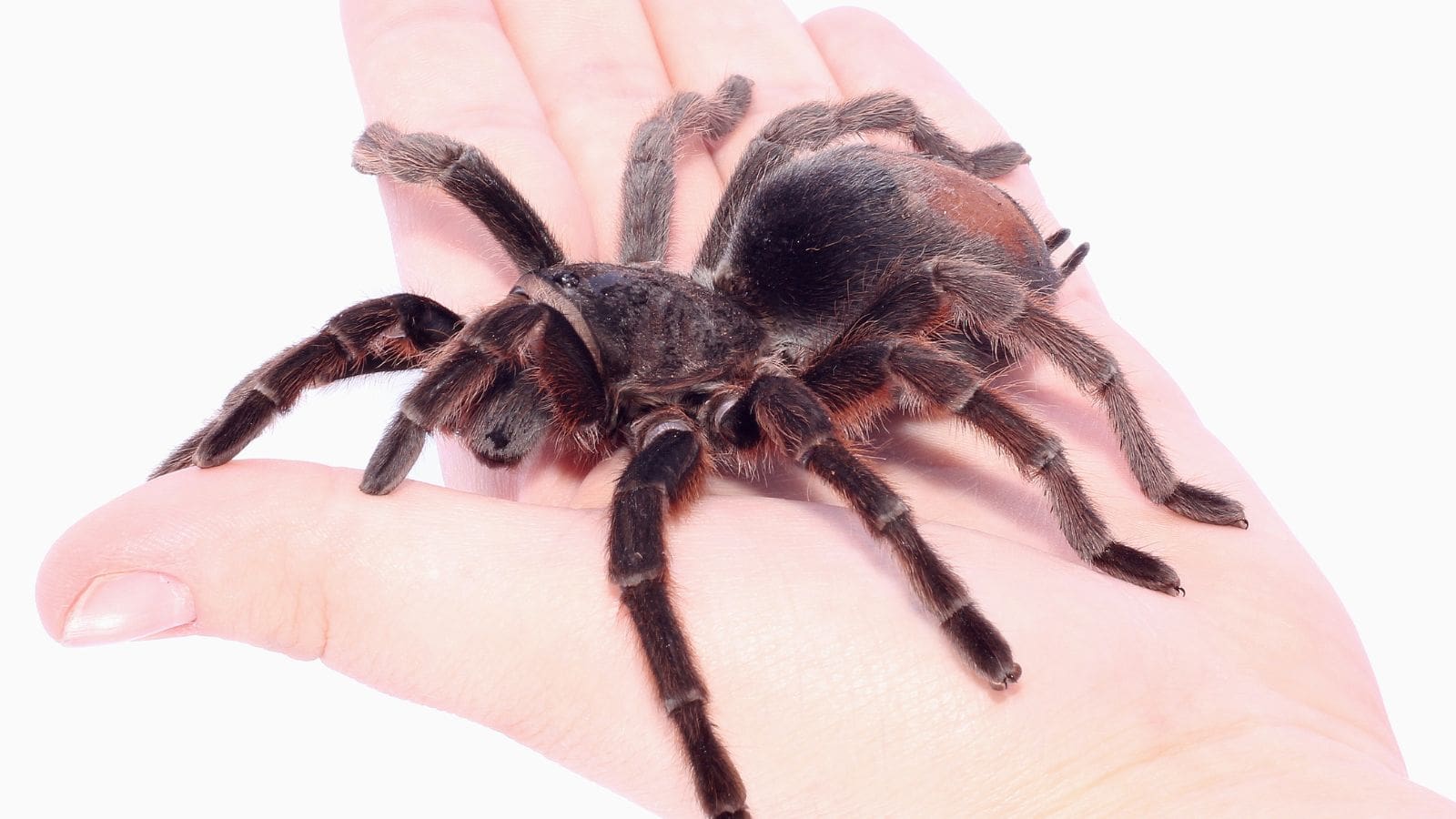
This species boasts a leg span of 10 inches and is found across all of South America, yet it is most common in dry, rural areas of Argentina. Interesting Engineering says it’s well known for its longevity, with some individuals living up to 30 years in captivity. The only danger it poses to humans is eye damage and itching from its irritating hairs.
Chaco Golden-knee Tarantula (Grammostola pulchripes)

The Tarantula Collective writes that this species can have a leg span of up to 8 inches and is a popular, calm, and easy-to-care-for pet! Native to Paraguay and Argentina, this tarantula gets its name from the golden leg stripes that adorn each leg. In the wild, they’re ground dwellers that prefer to hunt in the undergrowth at night.
King Baboon Spider (Pelinobius muticus)
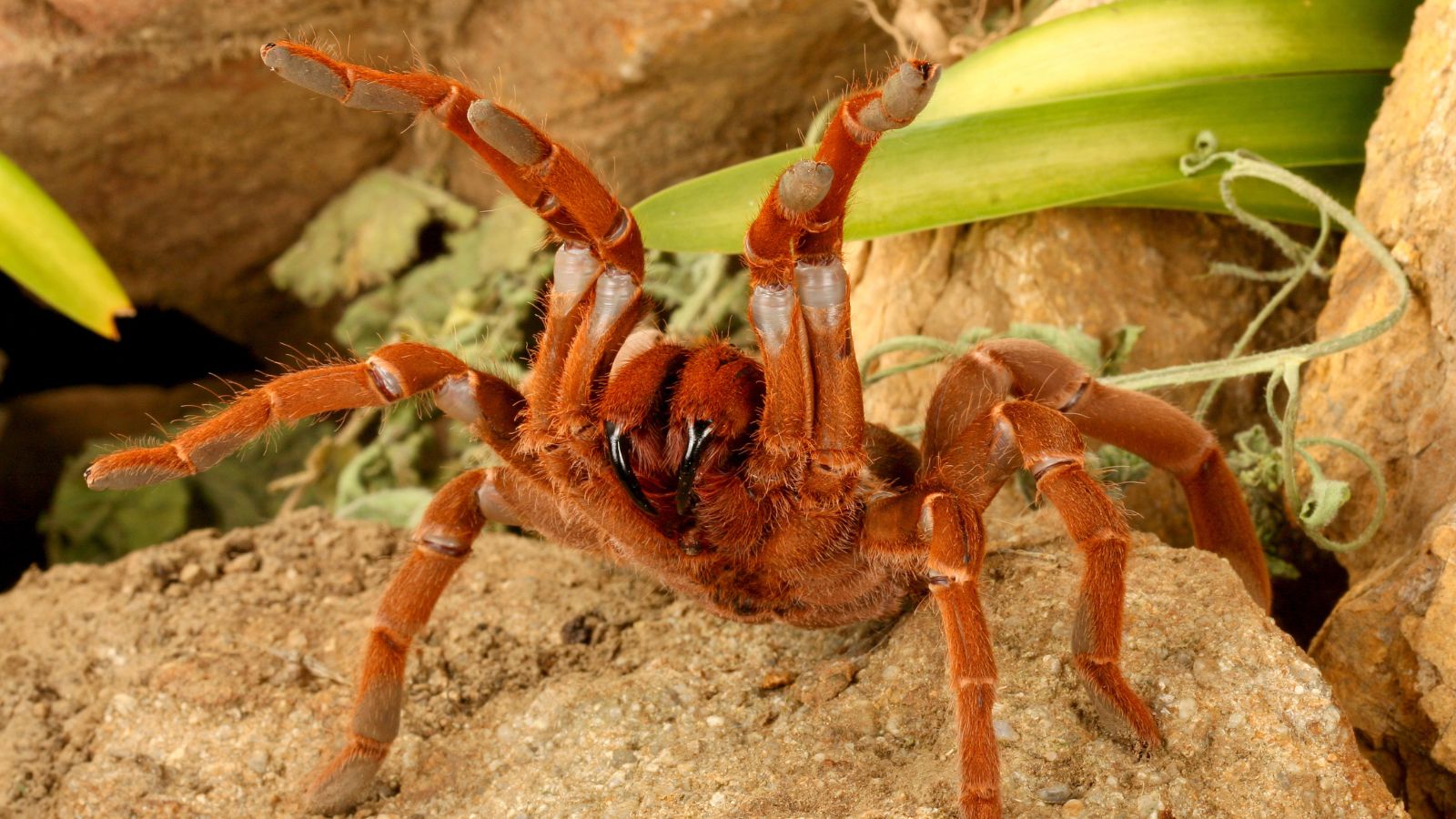
Originating from East Africa, the King Baboon Spider is the first spider on the list that’s both venomous and aggressive. Animal World states they can grow up to 8 inches in leg span and are a naturally burrowing species with a distinctive, burnt orange camouflage that helps them blend into their native habitat of red rocks and sand.
Colombian Giant Tarantula (Megaphobema robustum)
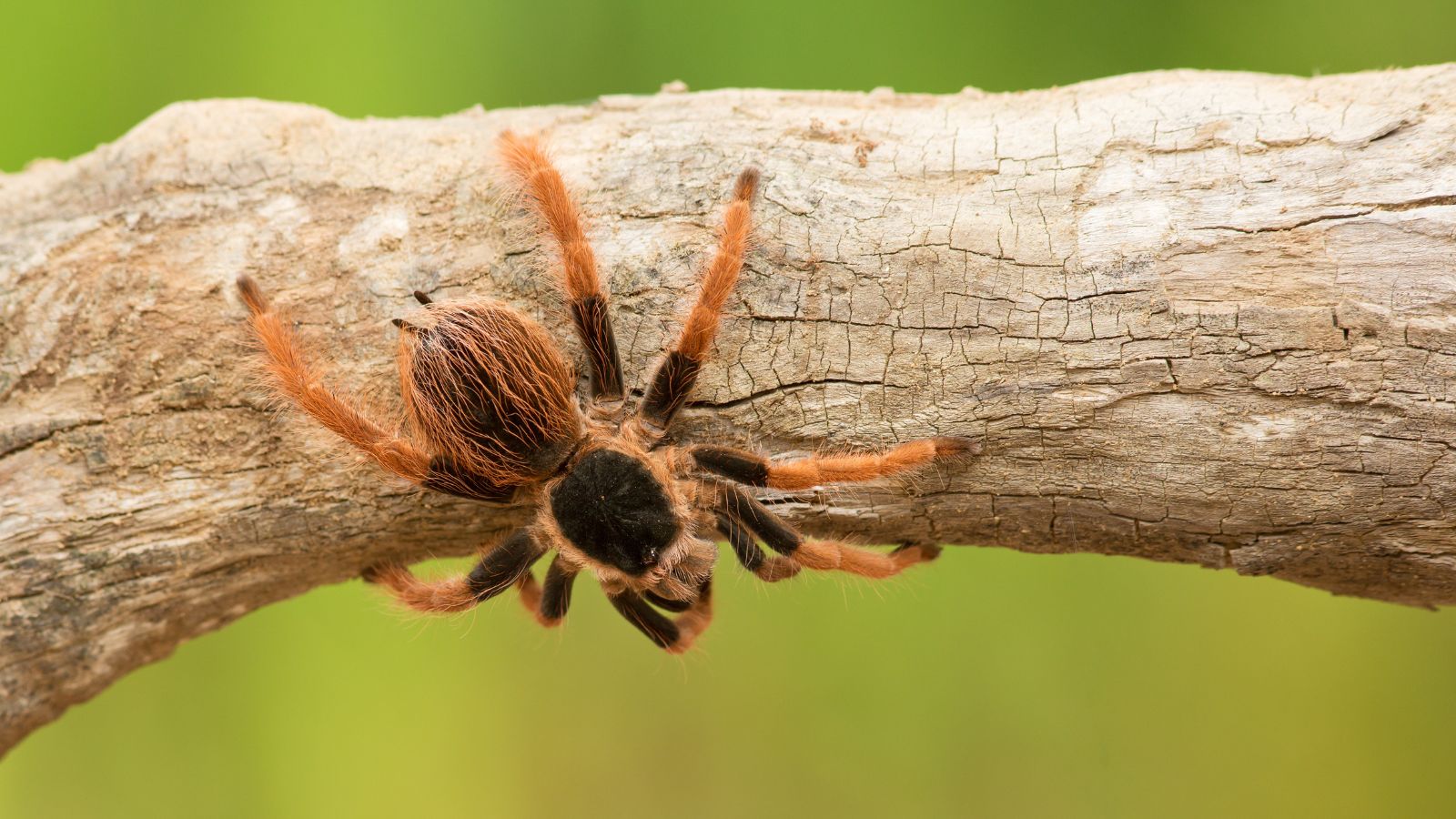
This South American tarantula is known for being ‘stocky’ and having a beautiful, variegated coloration of pale pink, white, and black. Although they mostly prey on insects, their large size (up to 8 inches across) makes them capable of taking down small rodents and lizards easily. They’re not normally aggressive but can be skittish and defensive.
Spotted Tarantula (Poecilotheria Rajaei)
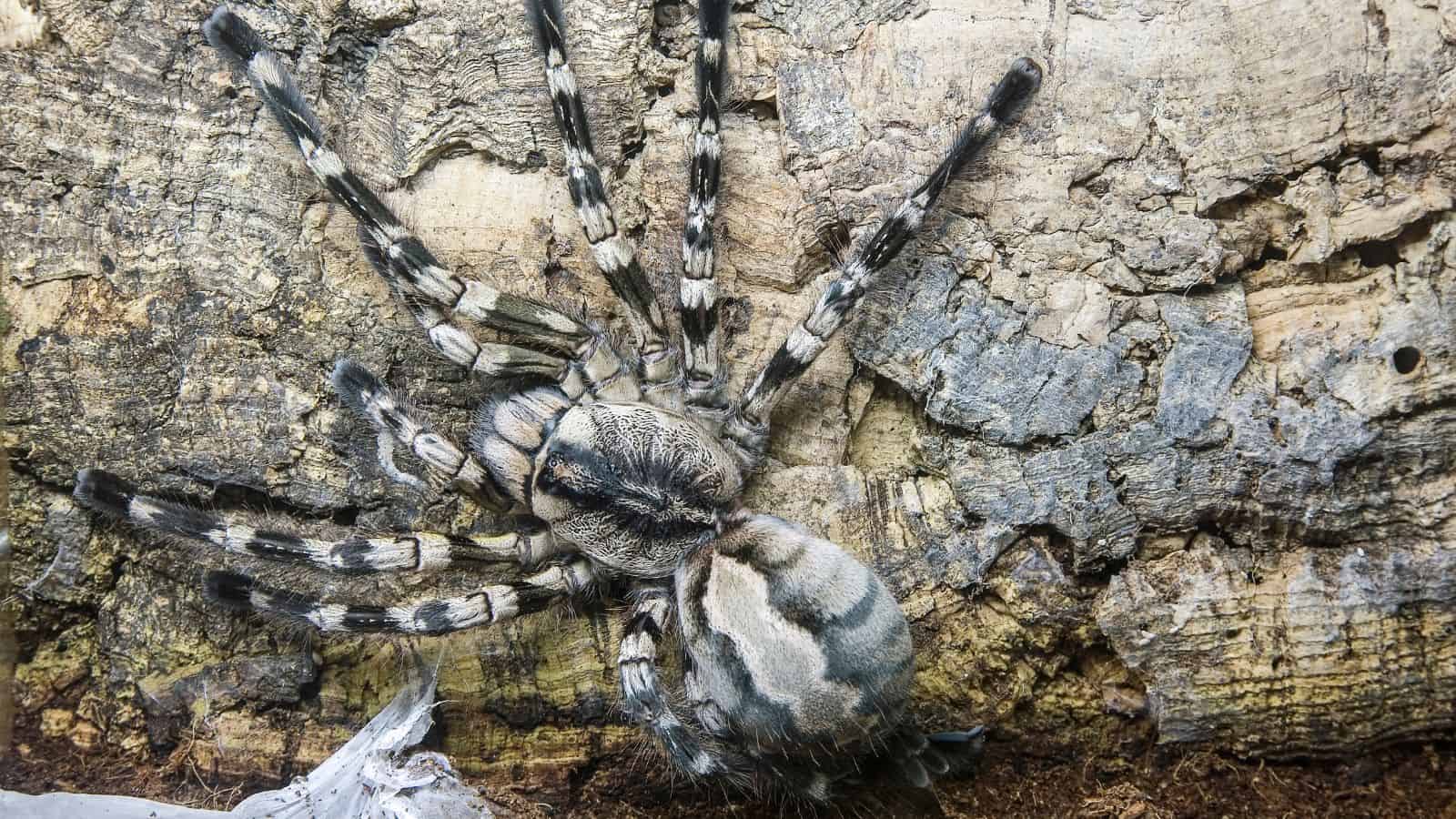
According to Tarantupedia, this newly-discovered tarantula from Sri Lanka and India can also reach up to 8 inches in leg span. They are arboreal, living in trees and climbing to prey on their diet of insects and small vertebrates like mice and lizards. They have a strikingly beautiful color pattern of white and beige spots and stripes for camouflage.
Brazilian Wandering Spider (Phoneutria spp.)
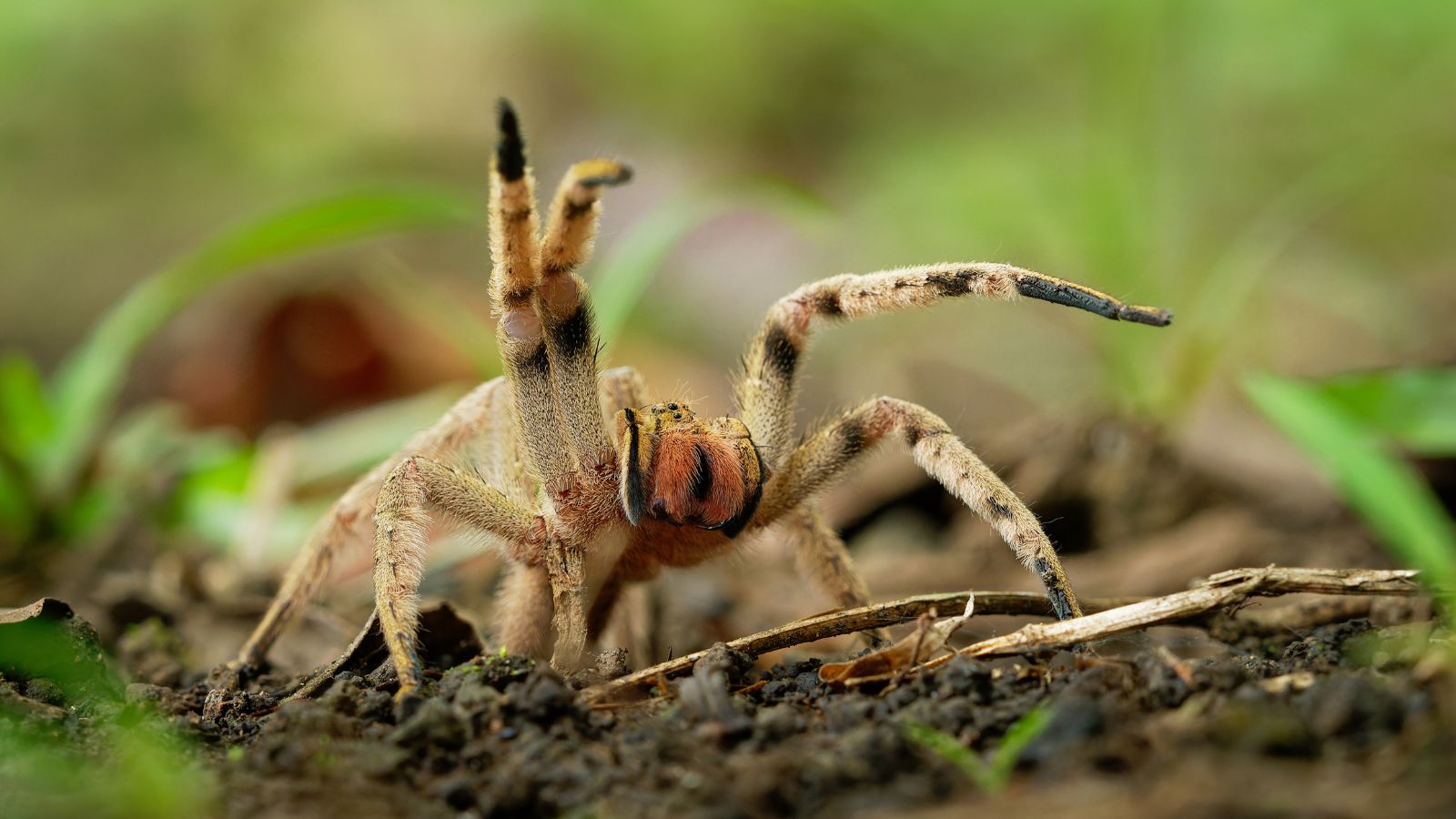
One of the most venomous creatures on planet Earth, this spider is also large and can have a leg span of up to 5.9 inches. They’re also aggressive and known to leave their rainforest habitat in Costa Rica, Columbia, Peru, and Brazil to take refuge in homes and cars! Luckily, bites are rarely fatal due to their inability to penetrate clothing and the low quantities of venom used.
Israeli Huntsman Spider (Cerbalus Aravaensis)
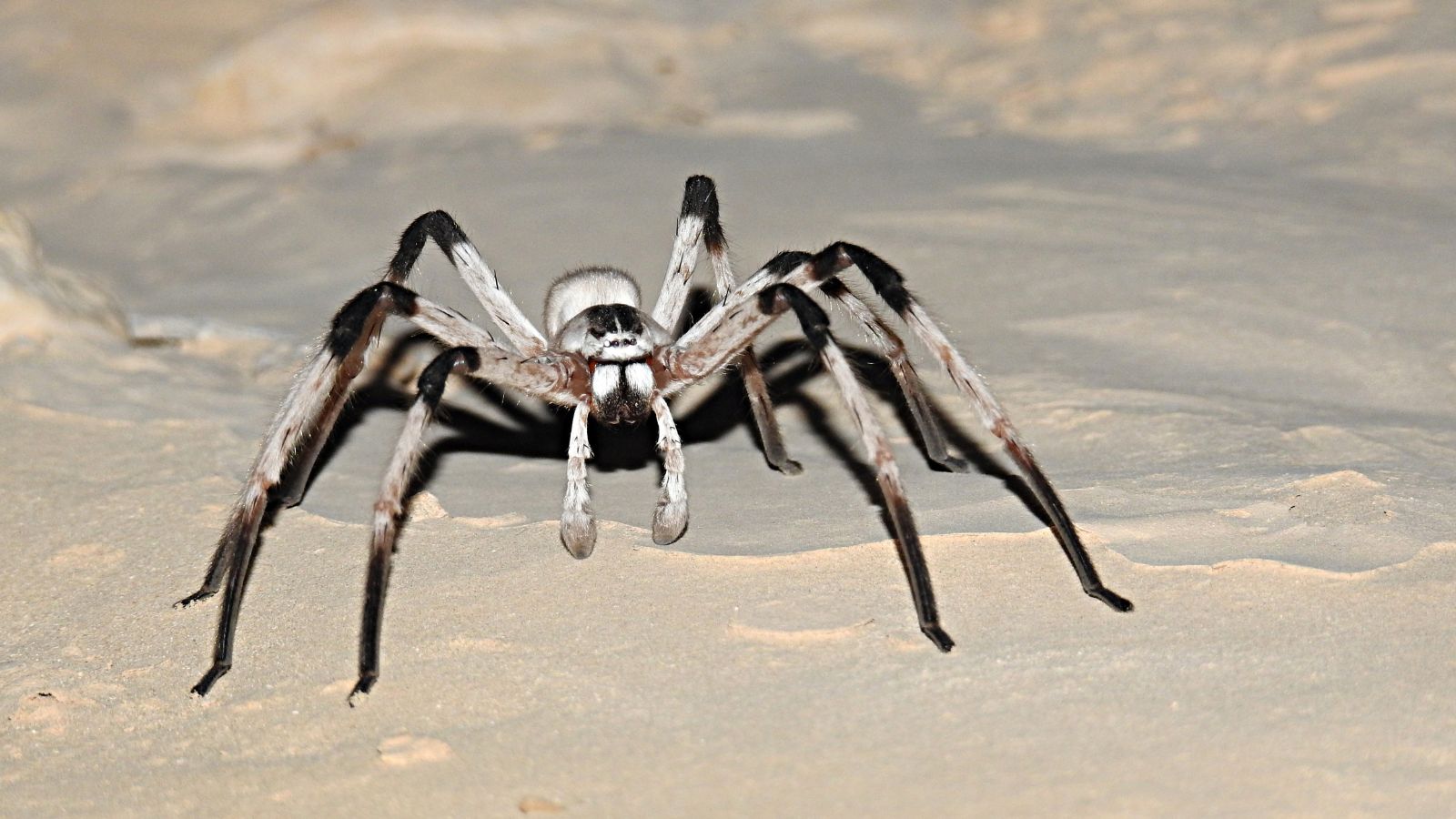
This newly discovered huntsman spider is native to Israel and is one of the largest spiders in the Middle East, with a leg span reaching nearly 6 inches. YNetNews reports that it’s extremely rare and threatened by habitat loss because it’s adapted to life in a specific area—the sandy environment of the Arava Valley.
Whistling Spider (Selenocosmia crassipes)
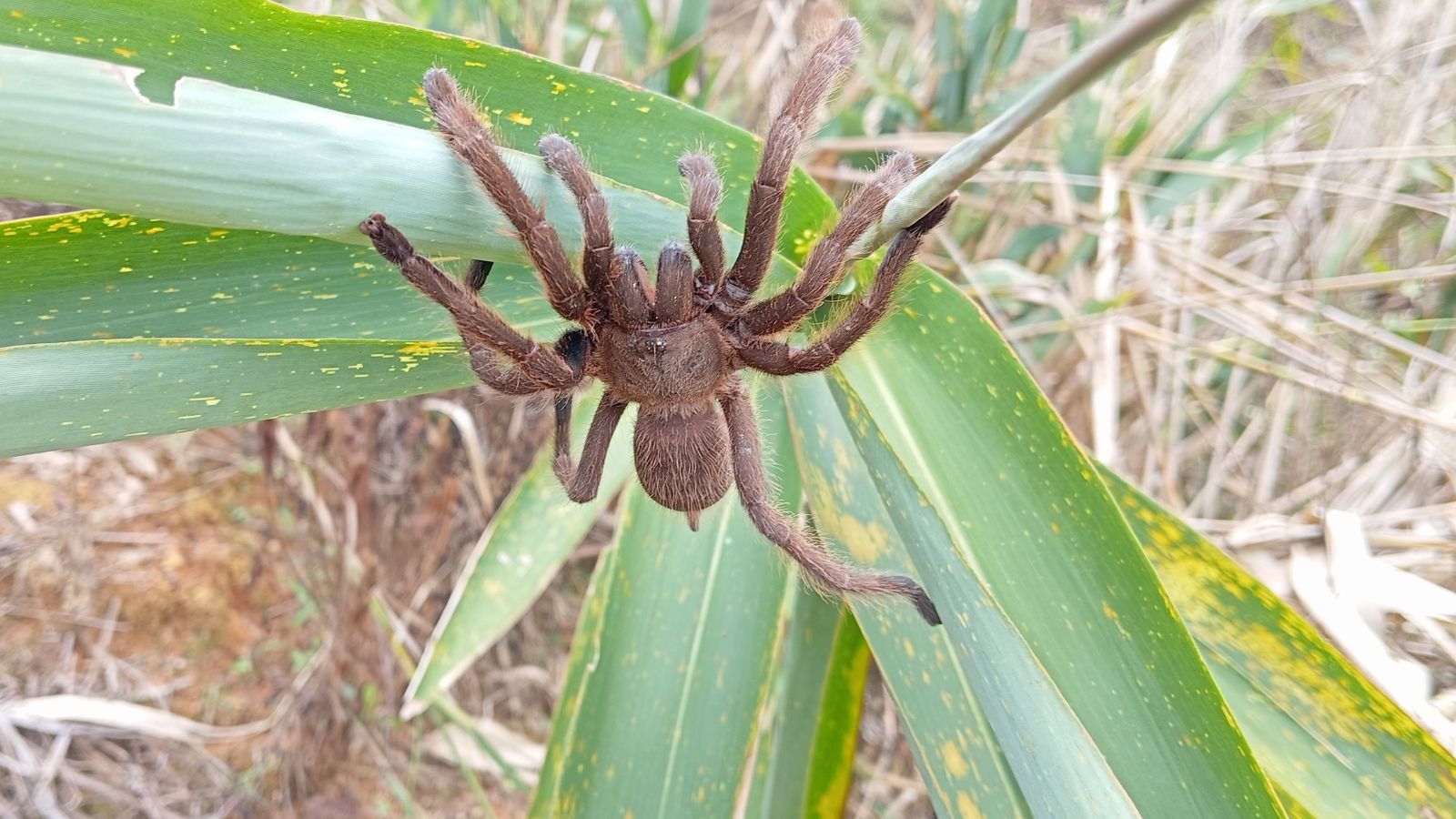
The Australian Museum says, “Australia’s biggest spiders belong to the same family as the Goliath Spider. They are the whistling spiders. The northern species Selenocosmia crassipes can grow to 6 cm in body length with a leg span of 16 cm.” This equates to a spider that is roughly 6.2 inches across.
Camel Spider (Solifugae spp.)
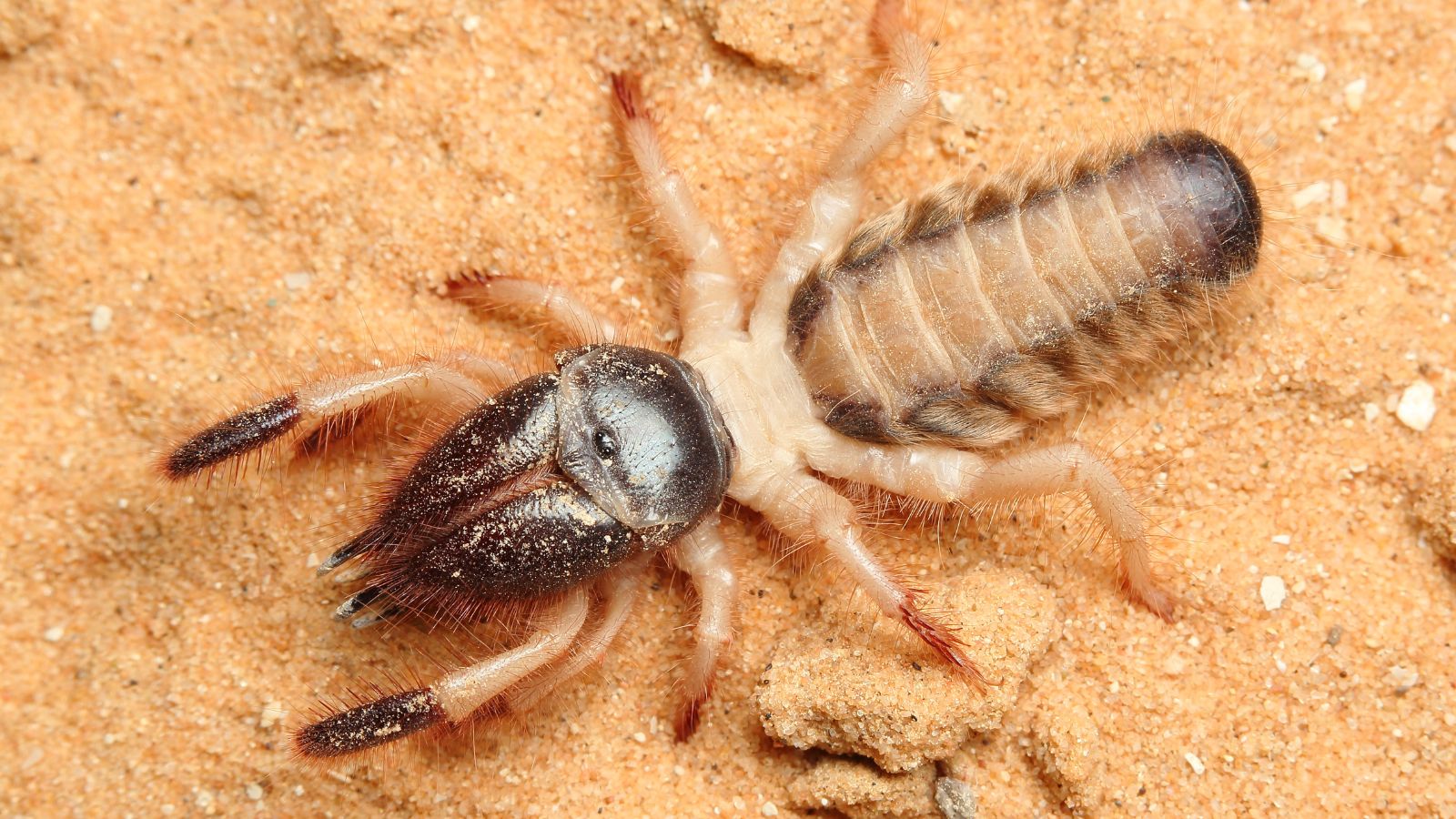
Also confusingly known as ‘wind scorpions,’ these arachnids are not officially classified as either spiders or scorpions! They can grow up to 6 inches long and are found in desert regions where they’re well known for their aggressive nature, fast movement, and painful (though nonvenomous) bite.
Mexican Redknee Tarantula (Brachypelma hamorii)
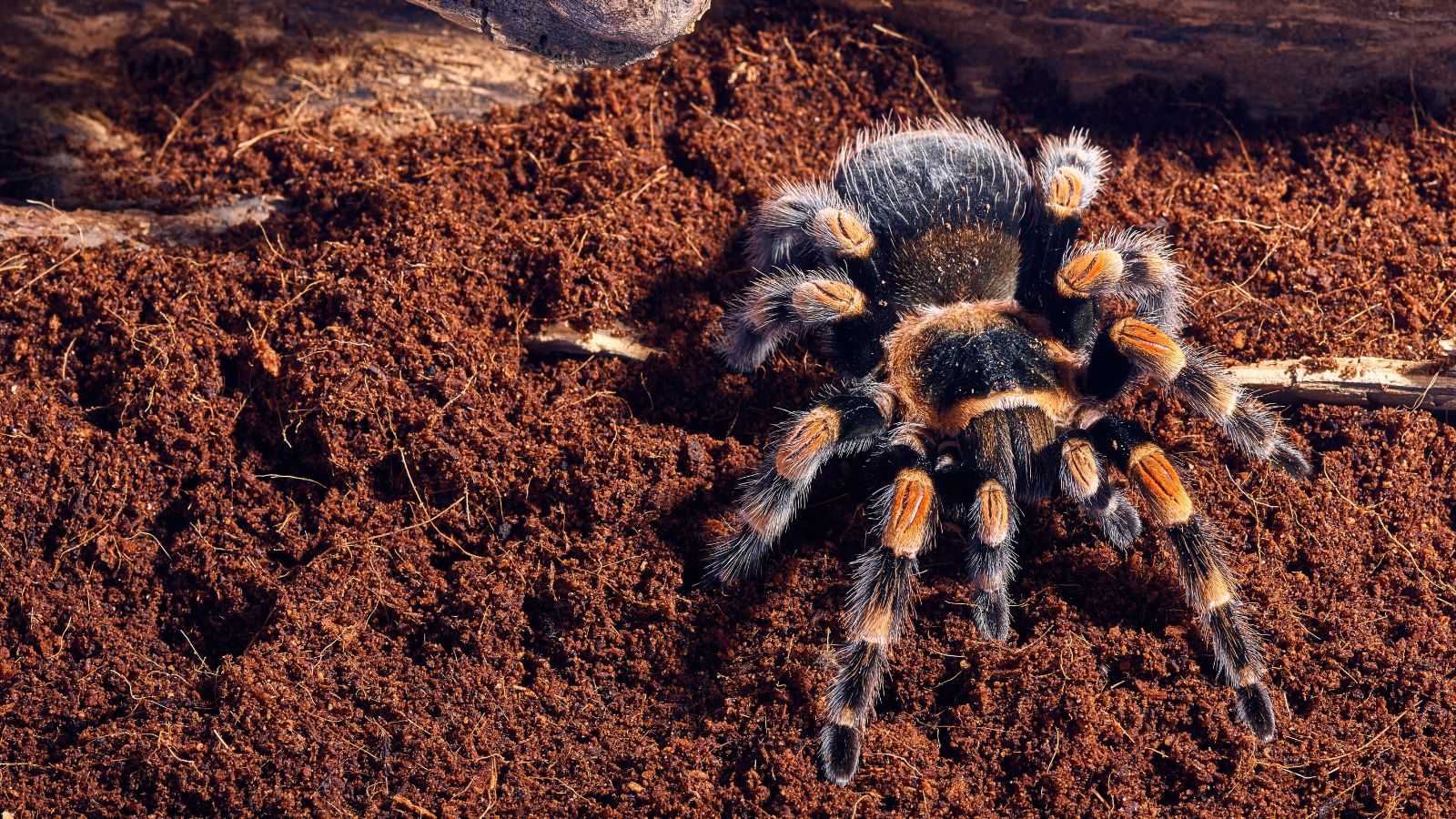
A popular pet among arachnid enthusiasts, the Mexican Redknee is a beautiful spider that can reach a leg span of up to 6 inches and is named for the distinctive burnt orange bands on its legs. It’s native to Mexico and is recognized by its vibrant red knees against a black body. They have a mild venom that’s fatal to their prey but only the equivalent of a bee sting for people.
Golden Silk Orb-Weaver (Nephila spp.)
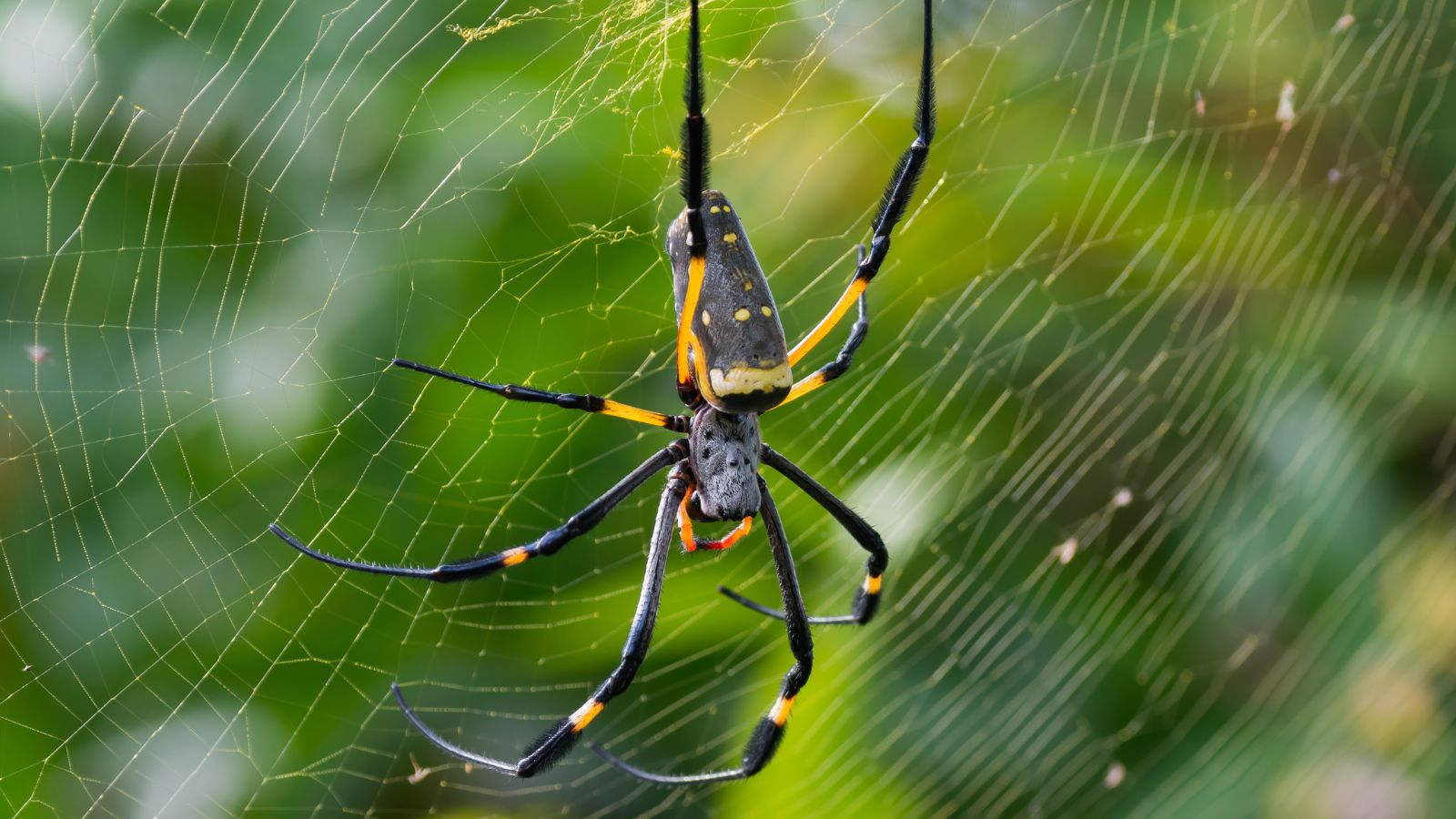
Famous for their impressively huge and intricate webs, females of this spider family can reach a leg span of 5–6 inches, although males are typically smaller. Their silk has a golden sheen and is incredibly strong, and they’re a common sight in many tropical regions worldwide, including southern states of the U.S.
Desert Blonde Tarantula (Aphonopelma chalcodes)
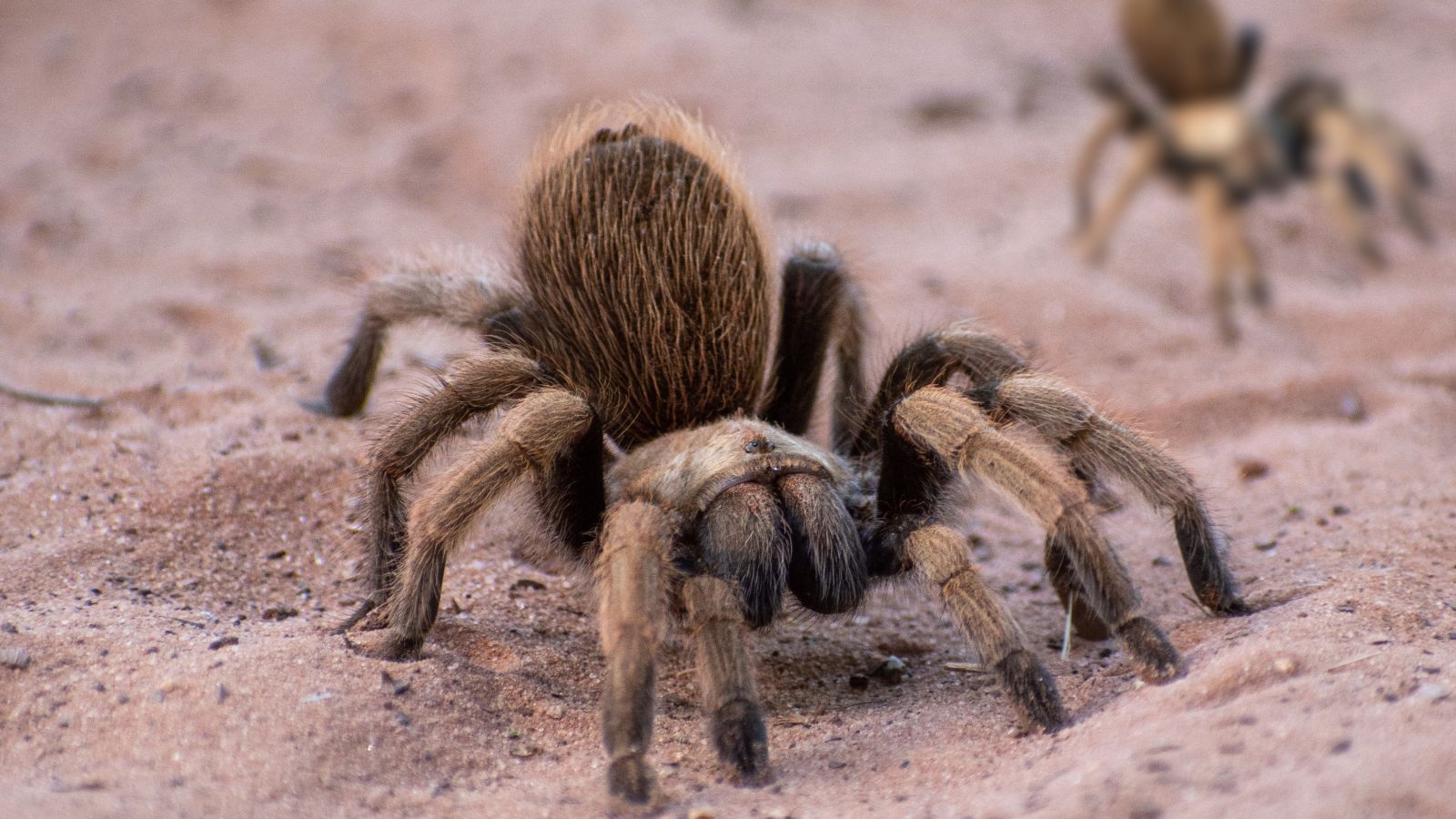
Found in the deserts of the Southwestern United States, this tarantula has a leg span of about 4-5 inches. It’s named for its light, sandy-colored hair that acts as good camouflage in desert habitats and is a docile, non-aggressive species. It is a good hunter of insects and even small animals, but poses no threat to humans.
European Wolf Spider (Lycosa Tarantula)

The largest type of spider in Europe, the ‘Lycosa’ group was the first spiders to be called ‘tarantulas’ yet is now classified in a different group to what scientists call ‘true’ tarantulas. Their body can reach 1.2 inches across, and they can have a 4-inch leg span. Known for burrowing, they inhabit Mediterranean regions.
Asian Joro Spider (Tricho Nephila clavata)
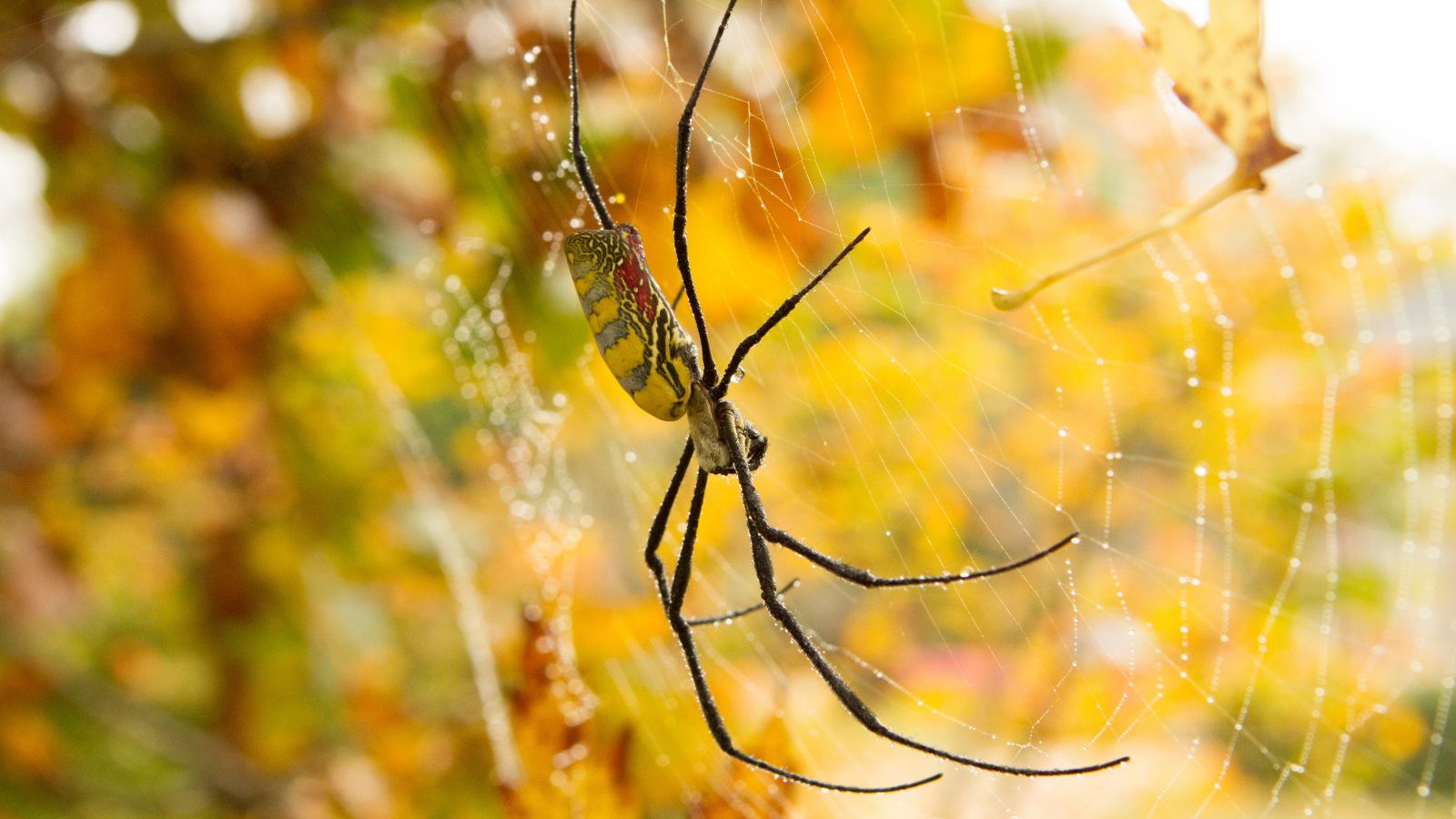
These large, venomous spiders are native to China, Japan, Taiwan, and Korea but can travel quite far by ‘ballooning’ themselves into a ball shape and being carried by the wind. The National Post claims they can reach 8 inches across but are slender, lightweight spiders. Luckily, although their bite is painful, it is not deadly.
Greenbottle Blue Tarantula (Chromatopelma cyaneopubescens)
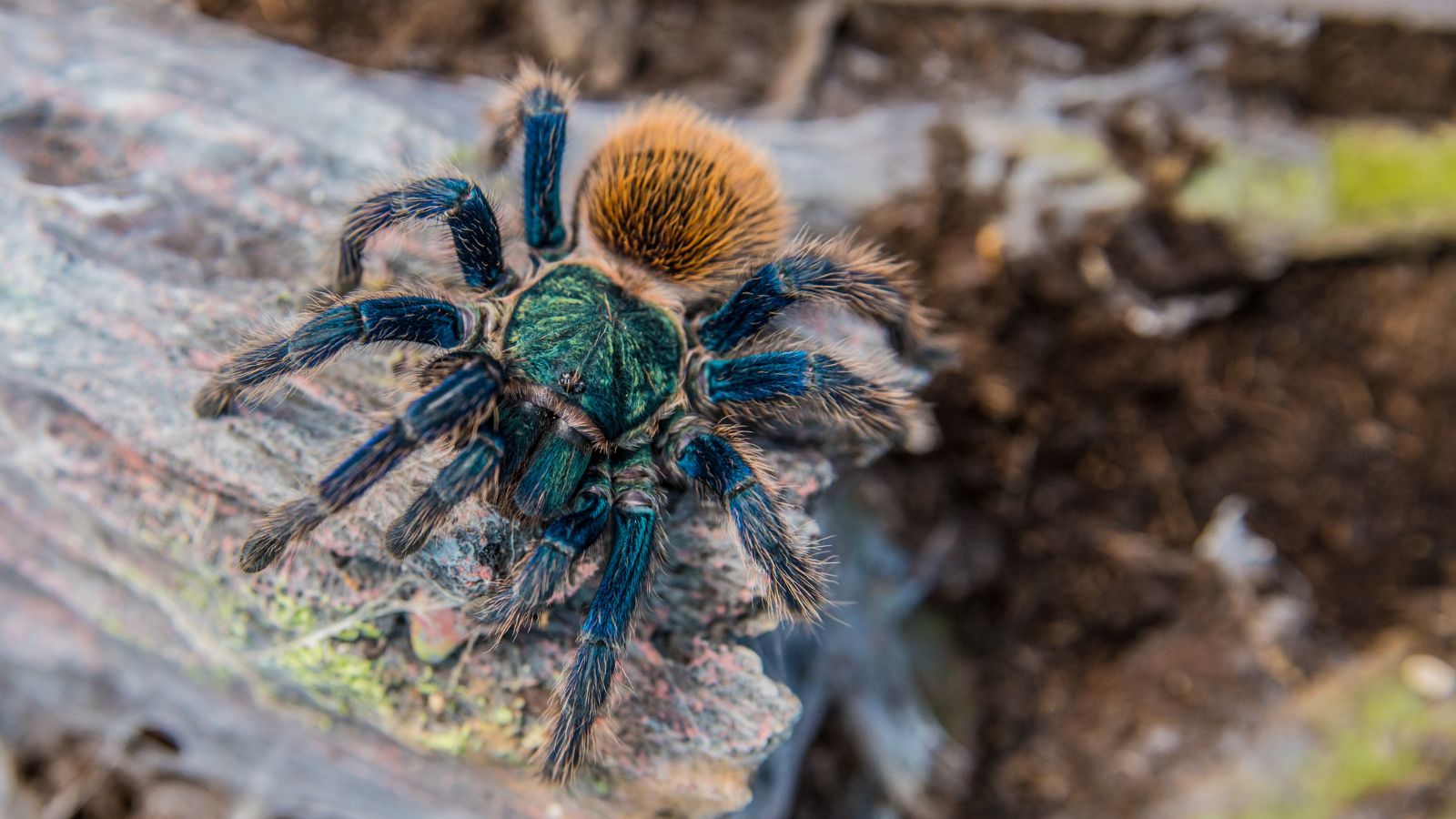
Known for its vibrant blue legs and green carapace, this Venezuelan tarantula has a leg span of around 4–6 inches and is a skilled and avid web builder. Experienced tarantula enthusiasts keep them as pets due to their fascinatingly aggressive feeding response and interestingly intricate webs.
Up Next: 17 Phrases Older People Use That No One Else Gets

Each and every generation has its own phrases and sayings that separate it from the rest, and the boomers certainly have plenty. Discover 17 popular boomer phrases that aren’t often used today and what they mean. Maybe you’ll want to bring some of them back!
17 Phrases Older People Use That No One Else Gets
People Who Don’t Show Empathy Usually Have These 18 Traits

The world would be a better place if everyone had a little more empathy. But sadly, in reality, some people show much less empathy than we’d like. Here are 18 traits of people who don’t show empathy.
People Who Don’t Show Empathy Usually Have These 18 Traits
The 17 Unhappiest States in America

The US has hit an all-time low position in the World Happiness Index, tumbling to 23rd in 2024. However, it’s important to remember that location is an important factor; many US states are very happy, unlike the following 17 US states that appear to be the most unhappy.
